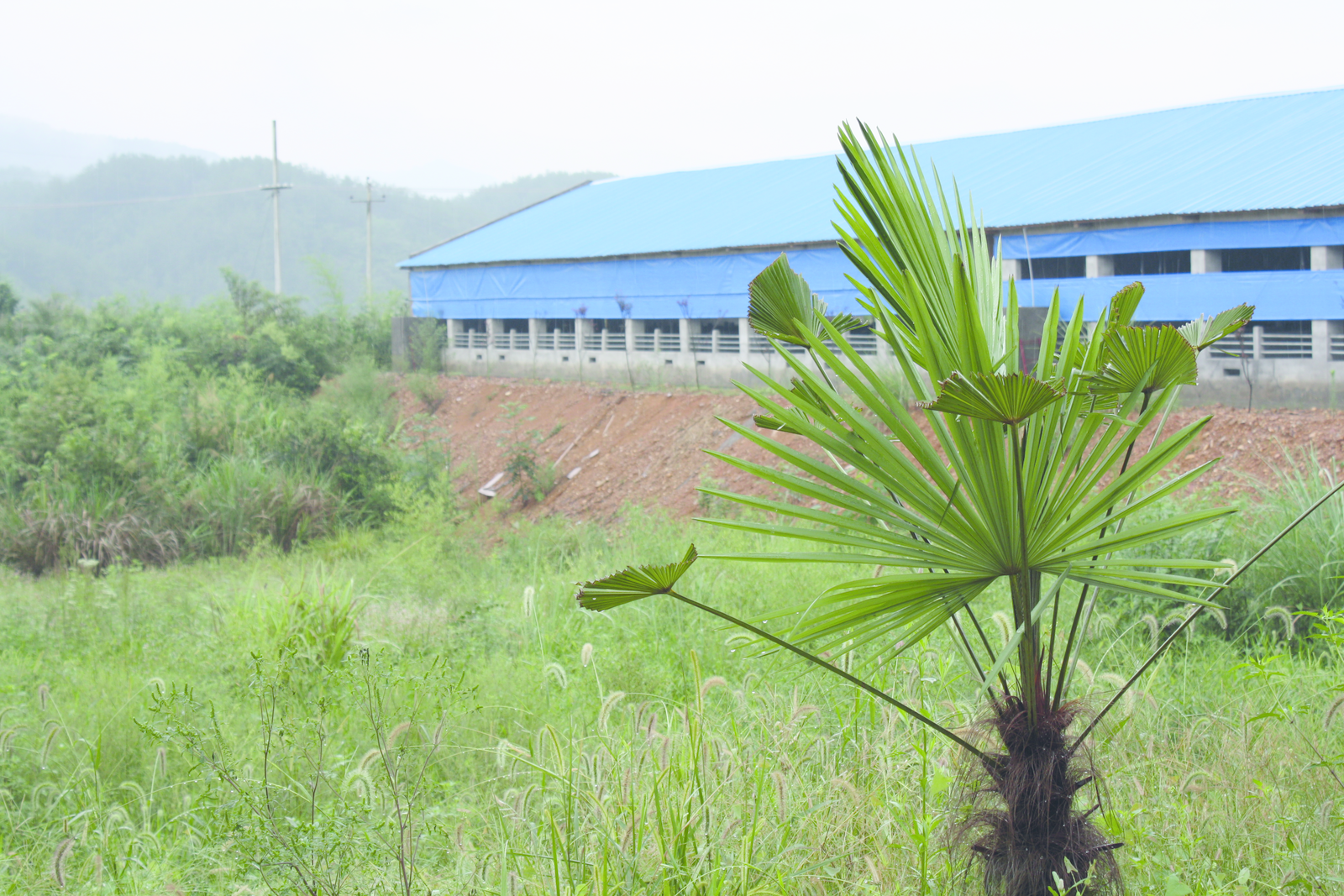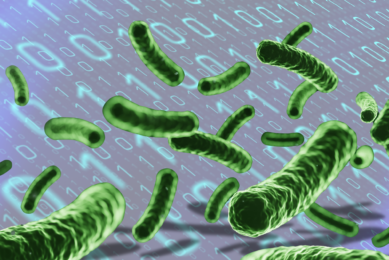Alternatives to antibiotics – the Asian perspective

The need to find alternatives for antibiotics is not restricted to livestock producers in the western world. The awareness of such a need is also recognised in Asian countries. Chinese research showed that using a pre-biotic is even more profitable than using antibiotics.
By Dr Mike A. Varley, the Pig Technology Company, Yorkshire, England
Antibiotics have undoubtedly been one of the milestone scientific developments of the twentieth century. Their use in both humans and animals has led to significant advances in the health of humans and has given the medical profession an armoury of very powerful tools to combat specific diseases. We almost take it for granted that a visit to the doctor will yield a targeted medicinal programme that will neutralise nearly all infections. In animals similarly, the use of antibiotics has enabled us to make great inroads into the control of most endemic and exotic diseases that are related to bacterial infections. As a consequence, animal productivity globally has also improved exponentially in the last 50 years or so.
A cover up for poor management
The use of in-feed antibiotics for farmed animals has also given us a very convenient tool for the application of these medicines and when they were first applied in this way, it soon became obvious that production parameters such as Average Daily Gain (ADG), feed intake and Feed Conversion Ratio (FCR) also improved significantly. It also was evident that production farms were able to operate at much higher stocking densities than used previously without incurring massive outbreaks of the diseases that are always present in large populations of farmed animals.
This practice has been used for many years and in many cases has been a cover up for poor farming practices and animal husbandry although in terms of short term cost-benefit ratios in-feed antibiotic applications do score well.
The problem of overuse
The problem with antibiotic overuse is that, although the companies that produce them continue to develop new variant products, there are still finite types of molecule that will give efficacy as medicines and growth promoters. It is also a biological certainty that with continued high level use, the target bacterial serotypes progressively develop and acquire resistance to these molecular structures. This is a similar process to any programme of genetic change where the surviving bacterial cells will pass on their genes for survival to the ensuing generations and gradually the whole population of bacterial cells is unaffected by the antibiotics.
What has always seemed more disturbing is the ability of bacterial cells to express the phenomenon of ‘plasmid transfer’ This is where a bacterial cell that has the ability to resist a type of antibiotic can transfer this via a specialised structure called a plasmid directly to another bacterial serotype or maybe even another bacterial species. This could be catastrophic to human medicine programmes.
When we look at the evidence from recent years in the incidence of ‘super bug’ strains of staphylococcus and other bacteria in hospitals then alarm bells are already ringing.
The European Union withdrew the use of antibiotics as growth promoters in animal production systems in 2006 and since then Europe has had to rapidly take up new knowledge on the alternative techniques. It now seems that Asian countries are beginning the process of removing antibiotics from use as in-feed growth promoters and South Korea is well down this track now and Taiwan is also in the process. Other countries like the Philippines are in discussions and China is also at the very early stages of a national debate on the move to ban antibiotics. One
of the problems for Asian countries is that the antibiotics are just so cheap to apply and in practice they use complex ‘cocktails’ of mixed antibiotics.
Prophylactic programmes
It is still possible to farm animals, even on a large scale, without the constant application of antibiotics. We now have some very effective alternative tools and our understanding of health and disease control is at a much higher level.
The first component of a production strategy therefore is to put in place the appropriate animal management techniques. This involves reviewing the overall farm management procedures including: stocking density, group size, batching system (AI/AO, batch farrowing), hygiene and cleaning protocols, weaning age and pig flows. It may also be necessary to review and implement changes in the physical structures used in production (the buildings themselves and the equipment used). The ventilation systems in use may also not be adequately maintained and this is an area demanding constant attention. All of this is therefore simply ‘best farming practice’ which should be in use in any case, to enable the farm to meet obligations towards quality assurance requirements for processors and supermarkets.
Organic acids
There has been an abundance of research work carried out either by commercial feed companies and also by academic groups on the application and efficacy of various in-feed additives. Everyone has searched hard for the ‘magic formula’ that will be a cure all for animal production farms. This body of work has thrown up a number of product groups that can be used to good effect coupled with the husbandry changes described above. Amongst these, the application of in-feed organic acids is always in the picture. We have known for many years that in-feed acids can lower gut pH and therefore induce a bacteriostatic effect in the stomach and further down into the duodenum possibly. This allows nutrient absorption to be more efficient and as a consequent we may see improvements in FCR and ADG. Acids such as formic acid, lactic acid , citric acid, sorbic acid and fumaric acid have all been used in this way at inclusion levels of between 0.3%-1%. The salts of these acids have also been incorporated into some acid blend products.
Acids are therefore a first line of attack in the overall strategy. Some of them like citric acid used for piglet feeds are both palatable but still have a good bacteriostatic effect whilst others like formic/ lactic blends are used to good effect in grower-finisher feeds or sow feeds. There are some problems with acids such as the corrosive effect on equipment but this is only seen as minor consideration and with the more widespread use of plastics nowadays this is not so much of an issue.
Probiotics/ Prebiotics
The manipulation of the gut microflora includes applications where beneficial bacteria are added into the feeds in order to curb the growth of the bacteria that will ultimately cause problems (usually E. coli serotypes and Salmonella species). The use of lactobacillus and bifida type bacteria fall into the category of probiotic applications. When they work effectively these in-feed bacteria can colonise the enterocyte cells on the gut wall and effectively prevent the further colonisation of the coliform types. The problem may be in selecting the right bacteria that can both bind well on to the gut wall but which can also induce the process of bacterial exclusion on the gut wall causing the coliforms to flush down the gut lumen without causing disease. Probiotics are also claimed to induce beneficial immunological reactions on the gut wall adding to the protective effect.
A further extension of this technique involves the promotion of the naturally occurring lactobacillus populations in the gut by the provision of a natural substrate for them to grow on. These so-called prebiotic compounds are invariably types of oligosaccharide molecules that work in this way.
There are a number of these on the market and they are usually a manan-oligosaccharide, fructo-oligosaccharide, galacto-oligosaccharide or a transgalacto-oligosaccharide. There are also some novel products developed recently based on a chitinoligosaccharide structure.
A novel pre-biotic product
A significant amount of research has been carried out in recent years with the novel compounds and their level of efficacy and consistency of function has improved greatly. They do support good lactobacillus growth in the gut and they do also generate beneficial immune reactions of their own on the gut wall. The new products also in this category are used at much lower levels of inclusion in feed formulations (because they are more powerful and concentrated) which is always an advantage for the commercial nutritionist.
Table 1 gives some recent data from a study carried out at the highly regarded Sichuan Agricultural University in China where a novel pre-biotic product was applied to post-weaned piglets. A negative control group was compared with a positive control group given antibiotics in the feed and also against a group of piglets given a chitin-oligosaccharide treatment. It can be seen that the pre-biotic treated piglets grew 25% faster than the negative control piglets but they also grew 19% faster than the positive control groups given in-feed antibiotics. This was down to an improved feed intake in treated piglets and a small improvement also in FCR.
Essential oils
Essential oils are the most problematic compounds to describe and maybe to understand because they are neither essential nor are they oils. They are however a group of compounds that are natural plant defence elements and hence they are mostly powerfully antibacterial. They are however often highly volatile and unstable and difficult to work with and use as in-feed additives. Some herbal species (extracts) contain essential oil elements in varying proportions and compounds such as eugenol, carvacrol and cinamaldehyde are examples of these. The best products are not only the ones that can demonstrate a high degree of efficacy against a wide array of bacterial serotypes but which are also stabilised and consistent during feed manufacturing processes.
Immunostimulants
The final group of materials for in-feed use are the category of immune-stimulants or potentiators. These also, under the right conditions of use, can be very strong in their potency and they can control the gut flora indirectly by generating higher levels of functionality in the natural gut (mucosal) immune system. Amongst these products are the beta-glucans and the nucleotide sources from either marine sources or yeast cell contents. The nucleotides can be especially useful because they are the building blocks for RNA/ DNA structures and when the animal has a high demand for growth, immune responses or reproduction for cell replication then the addition of nucleotides via the feed is a viable technique.
Application & conclusions
For the commercial nutritionist there are many options and decisions to make when selecting from the listing given above. The final option utilised may depend on the type of farm unit where the programme is being applied.
Figure 1 gives a schematic representation as to how we can apply a combination of applications depending on the farm type. Farms in the top left hand side category that are excellent in both health status and farm management competence will in reality only need a plain feed programme with no added products. In the middle band of farms (green, blue and orange) the farms will require varying additional applications depending on the category. The ‘red’ farms will be so poor in both respects that only prescription antibiotics will work and critical analysis by the veterinary practitioner will be required. This highlights the fact that there will always be a place for in-feed antibiotics for clinical application and, where the vet deems it necessary, to use these medicines.
At the end of the day everybody wants safe food from animals that have a high health status and are produced under the best of conditions. This can be done if our existing knowledge is applied systematically. There is certainly no place on farms today for indiscriminate and blanket use of the medicinal armoury.
AGP Special











